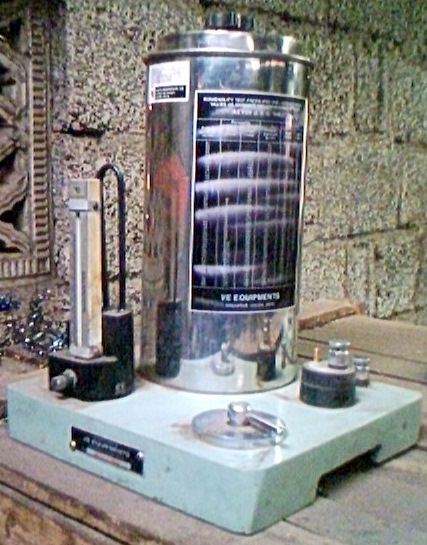 | ||
Permeability is a property of foundry sand with respect to how well the sand can vent, i.e. how well gases pass through the sand. And in other words, permeability is the property by which we can know the ability of material to transmit fluid/gases. The permeability is commonly tested to see if it is correct for the casting conditions.
Contents
Affecting factors
The grain size, shape and distribution of the foundry sand, the type and quantity of bonding materials, the density to which the sand is rammed, and the percentage of moisture used for tempering the sand are important factors in regulating the degree of permeability.
Significance
An increase in permeability usually indicates a more open structure in the rammed sand, and if the increase continues, it will lead to penetration-type defects and rough castings. A decrease in permeability indicates tighter packing and could lead to blows and pinholes.
Testing procedure
The absolute permeability number, which has no units, is determined by the rate of flow of air, under standard pressure, through a rammed cylindrical specimen. DIN standards define the specimen dimensions to be 50 mm in diameter and 50 mm tall, while the American Foundry Society defines it to be two inches in diameter and two inches tall. rammed cylindrical specimen.
formula is
PN = (VxH)/PxAxT
where
American Foundry Society has also released a chart where back pressure (P) from a rammed specimen placed on a permeability meter is correlated with a Permeability number. The Permeability number so measured is used in foundries for recording permeability value.
